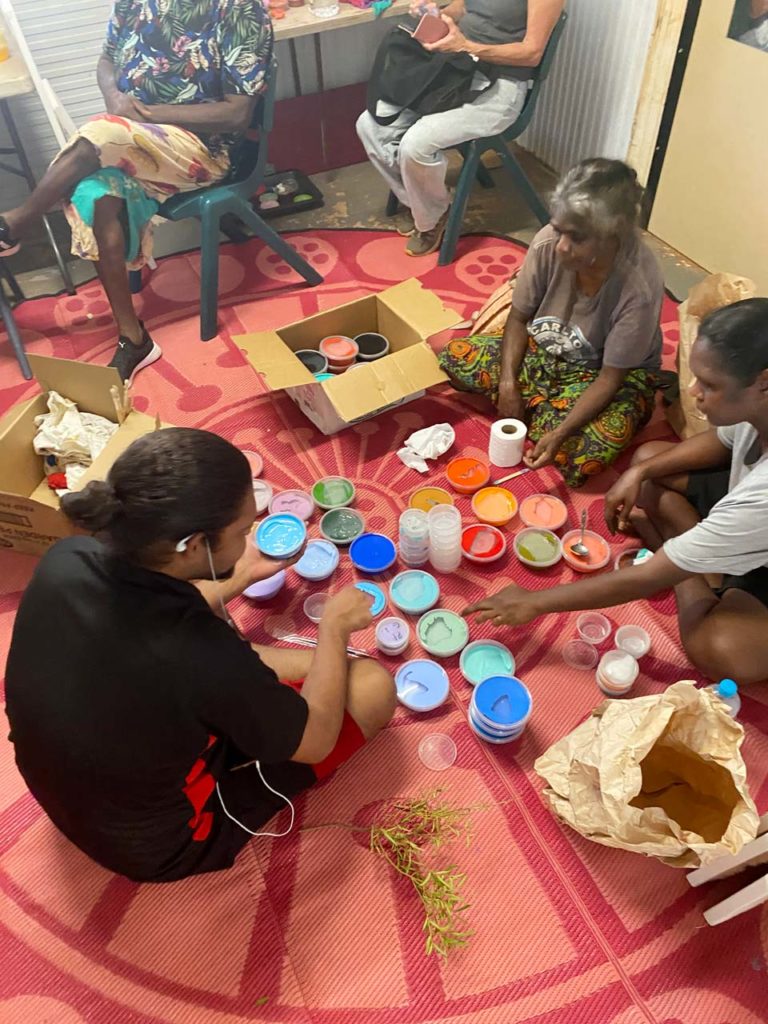New Energetic Works From Barkly Regional Arts Communities
Katie Lynch is Visual Arts Manager for Barkly Regional Arts. The organisation covers an area of around 283,648 square km which is twenty percent of the landmass of the Northern Territory (NT). In this interview, Katie talks about the different work coming from each of the different communities and how the disruptions of COVID have given rise to a refreshed vitality in the artists and their work.
There is a lot of excitement about the new works coming out of the Barkly Regional Arts communities, can you tell us about that?
Four Communities
We're really fortunate because we're working with four remote communities, Canteen Creek Artists (Owairtilla), Kulumindini Arts (Elliott), Epenarra Artists (Wutunugurra) and Tartukula Artists (Tennant Creek). Because of that, there's a huge amount of diversity in what we see and the kind of work that we get.
Epenarra & Landscapes
The artists in Epenarra are particularly active. It's a very small community of about 150 people, although numbers vary. We have at least twenty-seven active painters there this year and that is a number that is going up. The proportion of painters in that community is really high. There's been a real interest in landscape painting in that community. At the same time as that general focus, each artist is committed to developing their own visual language.
Different Approaches
While there is a broader visual language in Epenarra you also see individual artists exploring different sets of aesthetic and different approaches to using common motifs. To give you an example, a younger artist like Pammy Foster will apply rhythmic motifs to the canvas, removing the geological features of the landscape and instead depicting flora across a flat surface. Whereas, for an older artist like Susie Peterson the geographical features of the landscape remain incredibly important and combine with those repeated motifs of bush medicine, the eucalyptus tree, and bush tuckers.
The Weather & Colour Palettes
A big focus is the weather. The colours that artists are using are often in response to weather related changes to the landscape. The dramatic shift in the colour of the landscape is amazing out here. The minute it rains, a very dry landscape with lots of reds and lots of pale yellow and pale green colours transforms into this vivid green covered in wildflowers. That transformation is reflected in the artwork. This means you can easily tell what time of the year the artists are painting about.
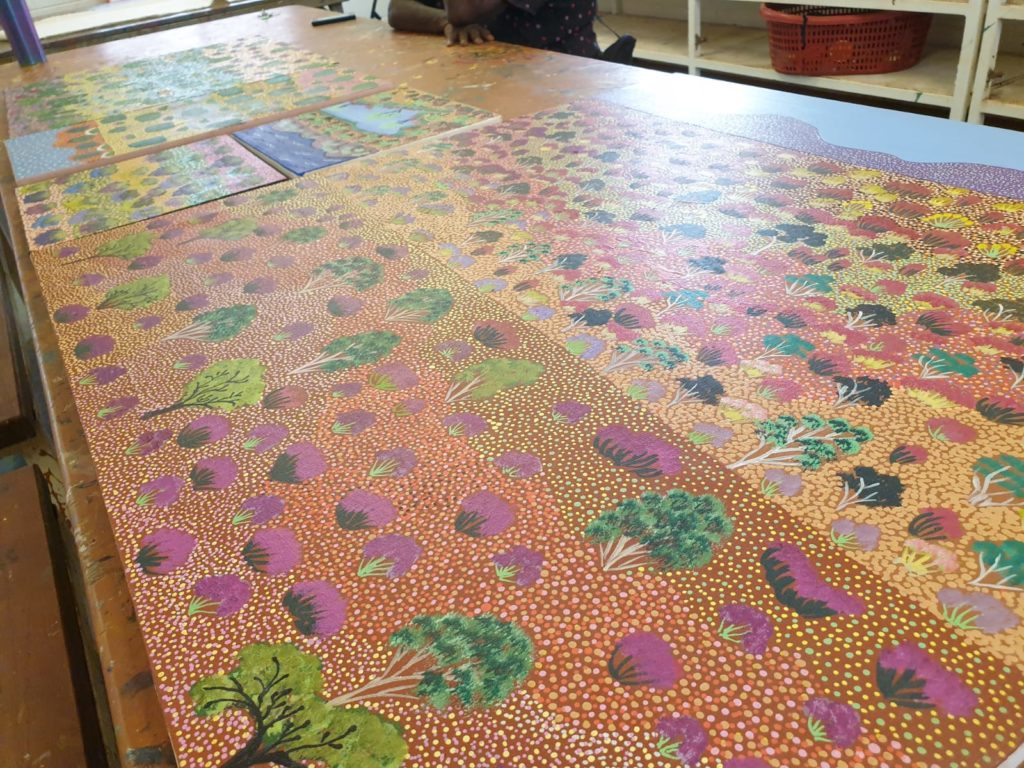
Tennant Creek Naive Visual Language
In Tennant Creek, it's a completely different visual language, as you'll see. Artists like Susannah Nelson, Gladys Anderson and Lindy Brodie are using more of a naive style. You'll see that these Tartukula Artists (which means big mob in Warlmanpa), use an approach that was initially inspired by artists like the late Peggy Jones and our most senior artist Susannah Nakamarra Nelson.
Religious & Figurative Themes
The influence of religion here is very prominent. Because of that, you get a lot of figurative work painted in a naive style that has been influenced by religious texts and art. You can see how an artist like Lindy Brodie has adopted the kind of figurative imagery of Susannah Nelson but is less graphic in her style than Susannah, instead using those repetitive patterns seen in the work of the Epenarra artists, reflecting the rhythmic nature of the landscape out here.
Repetitive Landscape
When you're driving along the road from Alice Spring to Tennant Creek you can see subtle changes in the landscape, but it is also very rhythmic, the entire way along the Stuart it is lined with spinifex, ant hills and white barked eucalyptus trees. That's what you see for hundreds of kilometres around here.
Canteen Creek
The artists in Canteen Creek are only about 50 kilometres away from Epenarra, but it is astonishing the difference between the two communities, even culturally. Their approach to painting is also different. They depict bush medicines and bush tucker, often in detail. What is similar is the use of rhythm. There is a large number of emerging artists in Canteen Creek, there is a vibrancy to the work coming from Canteen Creek as well. Fiona Corbett is an artist who immediately comes to mind. The whole group has a great sense of energy coming through in their work.
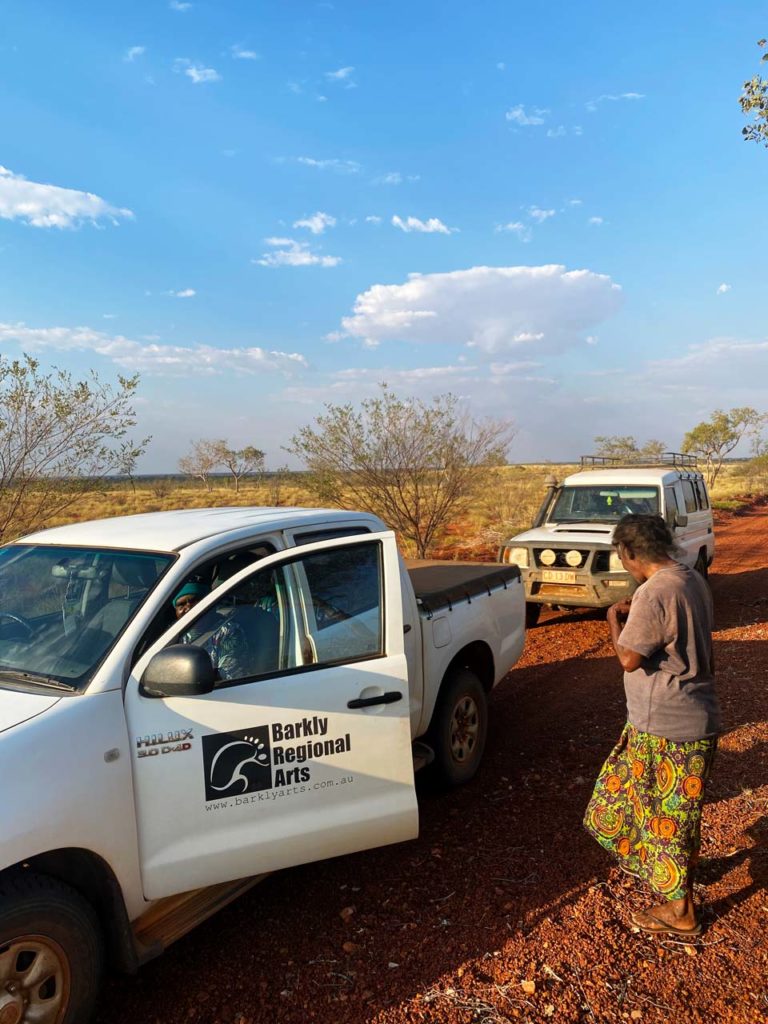
Energy & Pride
Actually, in all the communities, there are a great deal of people who want to paint. The artists are very motivated to show what each community can do. Epenarra in particular. They're just incredibly motivated to show people who they are, and who the Artists of the Barkly are, and that these amazing works are being made in this little tiny pocket of Australia. The artists have a great sense of pride.
Barkly Artists covers a massive space of 283,000 square kilometres.You've got sixteen language groups and 800 artists. There must be a lot of logistic challenges there?
Co-ordination & Logistics
There are. Managing those logistics are a big part of the job. So within Barkly Regional Arts, there's a music team as well as a visual arts team. Many of the 800 artists we talk about are musicians so we need to coordinate closely with the music team on things like, who gets the Troopy, the people mover, and when? Can someone take out canvases for us? Can someone collect works for us? Can we go out to community together? Who is where and what is happening in each community at any given time? But really we couldn't do it without our arts workers.
Arts Workers Manage Day To Day
Each community has an arts worker who oversees the studio in that community. We will take out materials, facilitate workshops, help with professional development, and help with selling works. It's the arts workers who really manage the day-to-day of the arts centres. They open things up. They're the ones making tea. They're the ones for cleaning up at the end of the day. They're the ones letting us know which materials the artists need before we go out.
Communication
We're lucky we have really good communication between the art centres in remote communities and us. We are constantly talking to artists and arts workers over the phone, of course that itself can be a bit tricky. They'll be describing works that they're doing or describing works that they're finished or asking about certain colours. It would be good to have some sort of video call system out there so we could actually see the work they are talking about.
It is easier when we're out there so we try to spend extended periods of time with the artists in remote areas. We will spend at least two nights out in Canteen Creek and Epenarra, a fortnight. Elliott is up the Stuart Highway, so that can be a day trip because it is a lot easier to get out there, it's on the highway. Whereas, Canteen Creek and Epenarra, are on dirt roads, which, in the wet season, makes it hard. We've been lucky so far this year because it's been fairly dry. Except for that big rain recently in Alice, we've been able to get out there. In the heart of summer, it can get very hard.
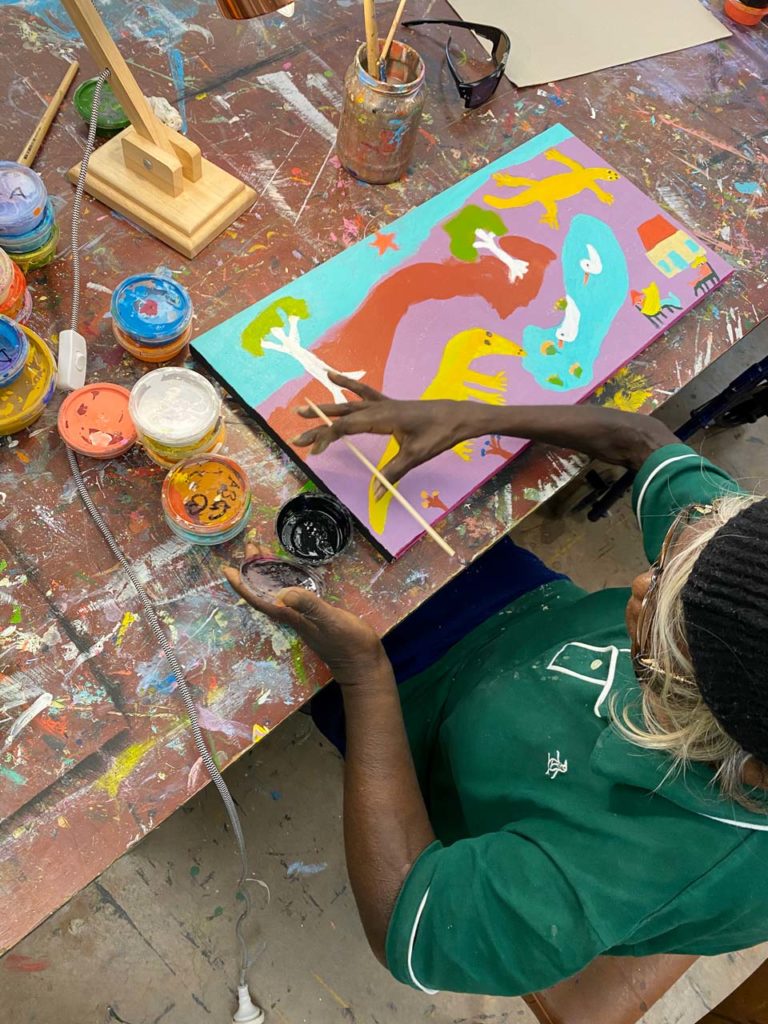
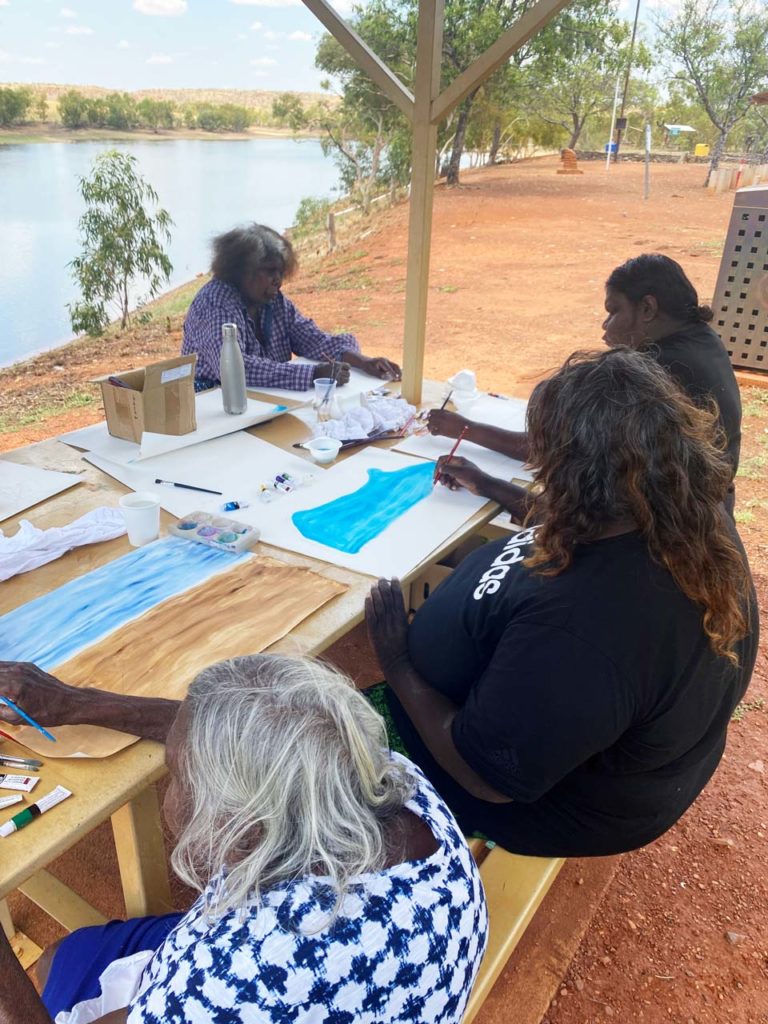
In this upcoming exhibition, what can people expect to see?
Japingka Exhibition 2022
People can expect to see a lot of colour. Expect the unexpected. There's no one work that really encapsulates the Artists of the Barkly. This is because of the different communities and because of the focus on developing people's individual styles. So while there will be naive style work, there are also intricate landscapes. There will be at least one work by Rita Beasley, who has these big energetic brush strokes filled with texture on an otherwise very minimal, simple canvas. So I would say expect colour, a lot of spinifex, bush medicine and landscapes. They can expect to meet a number of very different artists who are each working in their own style and developing their own visual language.
What impact has Covid had on the communities?
Art Centre Impact
Covid has had a massive impact on the art centre. A number of staff left during 2020, which meant that the art centre was unstaffed for about six months. This had an enormous impact on the artists. There was a staff member in the visual art centre who kept things going here in Tennant Creek, but without a number of staff, it's very hard to continue managing those remote art centres because you need people going out there regularly. When you go out in the bush, you need to have at least two in the car for safety reasons. That meant that the remote art centres were a bit dormant for a lot of last year. As well as that, certain communities, like Tennant Creek, had restrictions on entry.
Rebuilding
Overall, it did have an enormous impact, but this year we've been able to rebuild. There's been a huge amount of energy. It means that we've had to be very flexible with things like workshops but we have been able to get some going. We haven't had the opportunity to go to Darwin, for example, for the art fair, as we would normally like to. Having said that, the online versions of events have been really good.
Digital Platforms
Actually using our digital platforms has really paid off. We've been getting a lot of support from people through the website. We've been able to share what we're doing on social media, Instagram. We definitely had less people coming in. There was, of course, a period where the remote art centres were all closed. Maybe that period of dormancy is part of the reason there's so much energy to create now. It is a very exciting time and I think people will be able to feel that in the new show. The disruption refreshed the artists and they are keener than ever to put their work out there.
